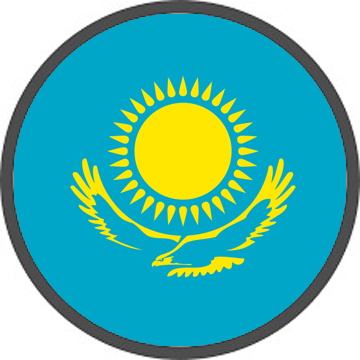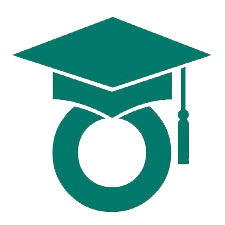Do you want to work in management and have a bright future? There is no need to look any further! Registration for the Xavier Aptitude Test (XAT) 2024 has begun at XLRI, one of the best management institutes. This coveted entrance test, sponsored by XLRI on behalf of XAMI (Xavier Association of Management Institutes), is the key to gaining admission to prominent management programmes and job possibilities. We will walk you through the XAT 2024 enrollment procedure, exam specifics, and the enormous value it delivers for your management objectives in this post.
XAT 2024 – Your Success Path
The Xavier Aptitude Test (XAT) 2024 registration has commenced, ushering in a remarkable journey for ambitious managers and leaders. XAT is a stepping stone to top management programmes not just at XLRI but also at prestigious Indian B-schools throughout the country. Candidates can demonstrate their ability, drive, and commitment to greatness by taking the XAT.
A Legacy of Excellence at XLRI and XAT
For decades, XLRI has been important in producing successful management professionals through its academic rigour and industrial relevance. XAT, which is administered by XLRI on behalf of XAMI, is one of India’s most prestigious admission tests. It draws thousands of applicants each year and is well-known for its thorough assessment of candidates’ aptitude, logical thinking, data interpretation, general knowledge, and decision-making abilities.
Important Dates and the Registration Process for XAT 2024
To begin your XAT 2024 adventure, it is critical to be informed of the relevant dates and to attentively follow the registration procedure.
The registration period for XAT 2024 began on July 15 and will end on November 30, 2023.
Candidates can begin downloading their admission cards on December 20. The test is set to take place on January 7, 2024.
Prospective candidates are urged to visit the official XAT website at www.xatonline.in to register for XAT 2024. The website contains full information on the test, such as the exam pattern, curriculum, eligibility requirements, and other important elements.
XAT 2024 Exam Pattern and Syllabus
The XAT question paper is divided into two sections, each with a time restriction.
Part I consists of three sections:
- Verbal Ability and Logical Reasoning (VA & LR)
- Decision Making (DM)
- Quantitative Aptitude and Data Interpretation (QA & DI).
Part II consists of two sections:
- General Knowledge (GK)
- Analytical Essay Writing (AEW).
The number of questions in the XAT normally ranges between 100 and 105, offering a thorough assessment of your ability. It is important to remember that the General Knowledge and Essay portions have no bearing on the cutoff score, but they do play an important role in the interview stage of the selection process.
XAT 2024 Eligibility Criteria
Candidates must have a three-year bachelor’s degree or equivalent qualification in any field from a recognised university or institution to be eligible for XAT 2024. Students who expect to finish their final exams before June 10, 2024, are also able to apply.
Other Participating Institutes and XLRI Programmes
XAT scores allow students to get admission to some of the most prominent management programmes provided by XLRI and other partner institutes.
- Business Management Programme (BM)
- Human Resource Management Programme (HRM)
- Post Graduate Diploma in Management (18 Months/Formerly known as GMP)
- Fellow Programme in Management (FPM)
- XLRI-RBS Double-Master’s Programme, Innovation, Entrepreneurship & Venture Creation Programme (IEV), and other programmes are available at XLRI.
Furthermore, prestigious Indian B-schools such as Loyola Institute of Business Management (Chennai), St. Joseph’s Institute of Management, IMT Ghaziabad, GIM Goa, Sri Balaji University, TAPMI Manipal, XIMB Bhubaneswar, and FORE School of Management (New Delhi) use XAT scores as a criterion for admission.
XAT 2024: A National MBA Admissions Exam
XAT is one of India’s most prestigious management admission tests. It is held yearly in over 90 places across the country. XAT, organised by XLRI Jamshedpur, is more than just an exam; it is also a doorway to prestigious management programmes. Its legitimacy and reputation make it very desired for those looking for a lucrative career in management.
XAT 2024: A Platform for Evaluation with Integrity and Fairness
XLRI assures that the XAT is carried out with the highest honesty and impartiality. It supports the evaluation platform’s integrity by utilising innovative technologies and current testing procedures. The examination procedure is intended to discover the most qualified applicants with the ability, skills, and potential to become future company leaders.
The Importance of XAT 2024 Scores in MBA/PGDM Admission
More than 160 top business schools in India accept XAT results. These scores serve as a barometer for their admissions process, providing hopefuls an advantage over their competitors. By performing well on the XAT, you place yourself among the top management applicants, increasing your chances of admission to premier management programmes.
XAT emphasis on decision-making abilities.
What distinguishes XAT from other aptitude tests is its emphasis on assessing candidates’ decision-making ability. The exam assesses more than just topic knowledge and ability. Its goal is to identify those who have the critical thinking abilities needed to flourish in leadership posts. By passing this prestigious exam, you will join the ranks of future corporate executives.
Keep Up to Date: Important Dates and Announcements
It is critical to maintain track of major dates and announcements about XAT 2024. The XAT is set be held on January 7, 2024, . The registration period will run from July 15, 2023 until November 30, 2023. Admit cards will be available for download beginning December 20. Maintain contact with the official XAT website and check for updates on a frequent basis to guarantee a smooth and successful application process.
Registration Fees and XLRI Programme Specifications
Candidates must pay a registration fee of Rs. 2100 to enrol for XAT 2024. If you are applying for XLRI programmes, you must pay an extra cost of Rs. 200 per programme. Review the XLRI Admissions prospectus for all programme details and make an educated selection based on your professional aspirations.
Step-by-Step Registration Process: How to Apply
To apply for XAT 2024, follow these steps:
- Register yourself on the official XAT website.www.xatonline.in
- Verify your email ID to complete the registration process.
- Fill out the XAT application form online.
- Upload the necessary documents as specified.
- Pay the application fees through the provided payment gateway.
- Submit your application form.
Enrolling in XAT 2024 is the first step towards a successful management career. You may gain admission to some of the most prominent management programmes provided by XLRI and other top B-schools in India by demonstrating your aptitude, determination, and decision-making talents. Keep track of critical dates, meticulously follow the registration procedure, and prepare thoroughly for the XAT exam. Begin your road to a bright future today!





















